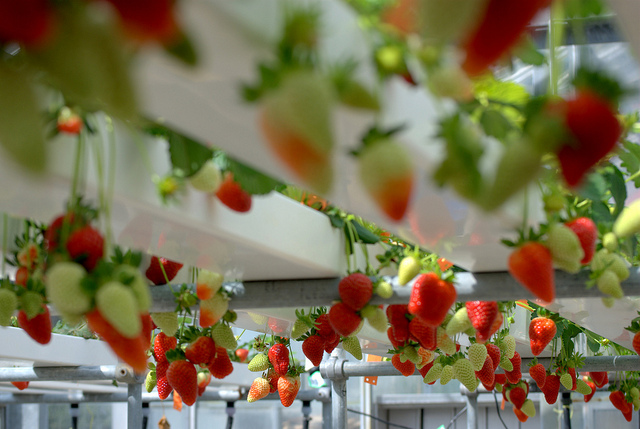
There are several ways of growing plump and luscious strawberries and one of those ways is by growing them hydroponically. Hydroponic systems enable strawberries to be grown at any given time of the year. Can you imagine having juicy strawberries in winter?
There are many advantages of growing strawberries hydroponically. Some include control of humidity, sunlight, heat, and irrigation. Moreover, you can also avoid dealing with pests and other diseases that strawberry farmers usually must deal with. Additionally, hydroponic gardening provides continuous high-quality nutrients, and this results in larger and more luscious strawberries at a much lower cost.
The best variety of planting hydroponic strawberries is to take the runners from your healthiest plants and then dip them into an inert growth media such as perlite or stonewool. After that, cover them with cling wrap or clear plastic to ensure that the levels of humidity are high. Make sure to keep them out of direct sunlight until the roots have flourished or you may risk losing the plants.
The best growing environment is to plant them in a greenhouse. Your strawberry plants will require at least 6-7 hours of daily sunlight to keep them healthy and strong. For the best results, keep your strawberries at a constant temperature of between 65 and 80°F.
Long term, you will have to let your strawberry plants go through a winter period to strengthen them. Strawberries usually take a rest in winter to prepare themselves for growth and healthy fruit during the next season. Preventing this rest period may result in weaker plants and bad yields. For the winter period, first dip the strawberry plants in an antimicrobial solution, wrap them up, and keep them in your refrigerator for 2-5 months. After that, you can put them back into the hydroponic system.
In hydroponic systems, strawberry plants do not have soil to acquire their nutrients from. Therefore, you will need to cultivate them with a commercially available hydroponic solution. The perfect pH for strawberries is 5.8-6.2. Be sure to change the solution about every 2 weeks to ensure it can support optimal growth of your plants.
Strawberries from a hydroponic point of view are much like lettuce in their suitability to types of hydroponic gardens. They also have a small root system and are particularly suited to growing using the nutrient film technique (NFT). Plants can be grown at a very high density in PVC pipes. The only thing that needs to be considered is that strawberries will hand down, so room needs to be allowed between each row for this to happen freely. Water culture can also be used for growing hydroponic strawberries, where the strawberries would happily rest on the polystyrene sheet.
In an indoor hydroponic system, it is not possible for insects such as butterflies and bees to pollinate your strawberries. You will need to do this by yourself. One way is by brushing your hands on the open flowers. This will make the pollen grains from the anthers fall directly onto the pistil. This will pollinate the plant.
Hydroponic strawberries have got many benefits and are easy to grow. In addition, you can harvest your strawberries while standing up. This can in turn help you to avoid the back breaking work which you will encounter when you are growing strawberries traditionally.
Pavel Sluka is the owner of Hydroponics Habitat.
Related Articles & Free Email Newsletter Sign Up
Container Hydroponic Systems are Great for Beginners
How to Build Your Own Deep Water Culture Hydroponics System
Required Daily Maintenance for a Hydroponic System



Comment here